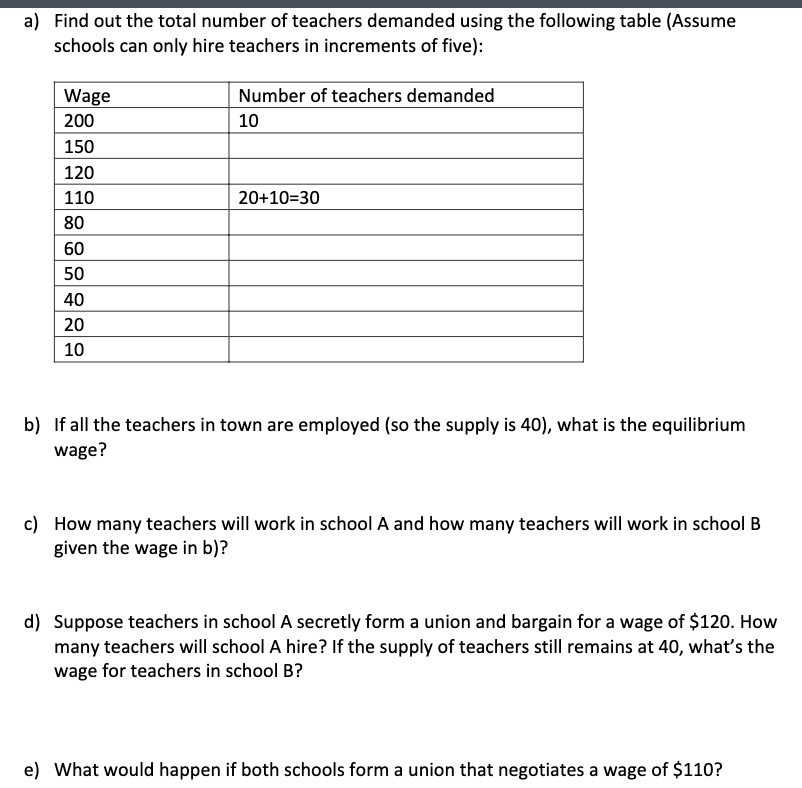Answered step by step
Verified Expert Solution
Question
1 Approved Answer
2. There are two elementary schools in the town, and there are 40 teachers who are trying to decide whether to work for one


2. There are two elementary schools in the town, and there are 40 teachers who are trying to decide whether to work for one of the two schools. The marginal production of labor at each school is given by the following table: Number of School A School B teachers 10 200 110 15 150 80 20 120 60 25 80 50 30 70 40 35 60 20 40 50 10 a) Find out the total number of teachers demanded using the following table (Assume schools can only hire teachers in increments of five): Wage 200 Number of teachers demanded 10 150 120 110 20+10=30 80 60 50 40 20 10 b) If all the teachers in town are employed (so the supply is 40), what is the equilibrium wage? c) How many teachers will work in school A and how many teachers will work in school B given the wage in b)? d) Suppose teachers in school A secretly form a union and bargain for a wage of $120. How many teachers will school A hire? If the supply of teachers still remains at 40, what's the wage for teachers in school B? e) What would happen if both schools form a union that negotiates a wage of $110?
Step by Step Solution
There are 3 Steps involved in it
Step: 1

Get Instant Access to Expert-Tailored Solutions
See step-by-step solutions with expert insights and AI powered tools for academic success
Step: 2

Step: 3

Ace Your Homework with AI
Get the answers you need in no time with our AI-driven, step-by-step assistance
Get Started


